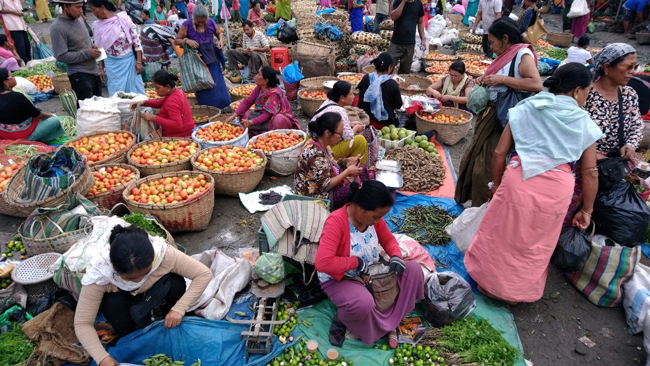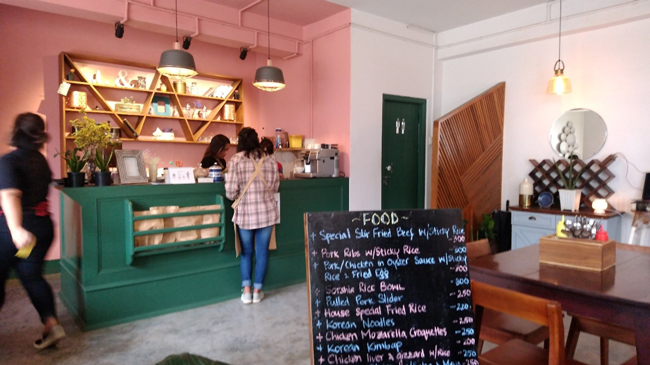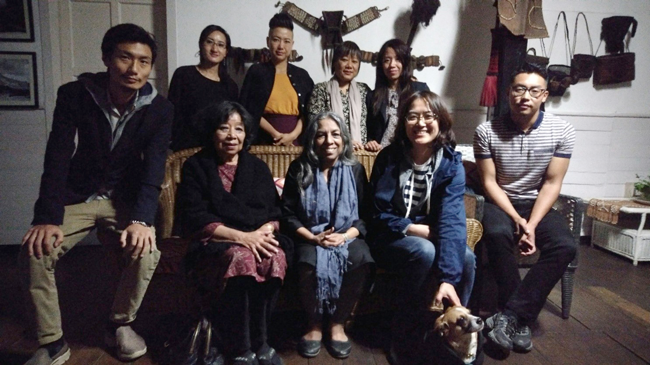What Is Northeast India?
Have you come across a region called "Northeast India"? As the name suggests, Northeast India is the region located in the north-eastern part of India, and it borders on China, Myanmar, Bangladesh, and Bhutan and comprises eight states of Assam, Arunachal Pradesh, Tripura, Nagaland, Manipur, Mizoram, Meghalaya, and Sikkim. Manipur and Nagaland were the former battlefields of Operation Imphal, among the fiercest fought during the Second World War. The road from Nagaland's state capital Kohima to present-day Myanmar via Manipur, was Japanese solders' route of retreat back to Burma, which was then filled with their corpses and later came to known by a horrifying name of "Hakkotsu Kaido" (exact translation from Japanese is "the road of bleached bones"). Moreover, it should not be forgotten that the region produces the finest teas—Assam Tea. Though there are connections with the region here and there, the people of Northeast India and their lives are somehow overlooked. This is in stark contrast to neighbouring Bhutan, which has been characterized as an idyllic "Shangri-la," and also to the global attentions to neighbouring Myanmar with extensive international coverage of its recent circumstances.
Probably, the biggest reason of this unfamiliarity is that the region is a mere part of India—an emerging global power. The total population of the eight Northeast Indian states is approximately 45 million, similar to that of Spain or Argentina—an inconsequential minority within a country of more than 1.3 billion people. Yet, even by Indian standards, this small region is extremely diverse and home to a colourful mixture of hundreds of ethnic groups and languages, nourished by a rich ecosystem from the Eastern Himalayas and the Brahmaputra River. There is a slight sense of hesitation to call such a cosmos of diversity with a monotones term "Northeast India", following how Britain, the former colonial power, named this region. However, there is a common notion that the inhabitants of Northeast India are viewed and treated as if they were a "foreign" entity within India.
Ethnically speaking, the people of Northeast India are more familiar with Myanmar and Yunnan region of China, except for those descended from Bengal or Northern India. The lifestyles of local people and particularly their dietary habits have much in common with the Japanese, including consumption of fermented soybeans, glutinous rice, and bamboo shoots. In fact, the region embraces a unique path both historically and culturally from Indian subcontinent. Under the British colonial rule, the princely states of Manipur and Tripura, as well as hill tracts between Assam and Burma, enjoyed considerable autonomy in matters of internal administration. In the aftermath of World War II, Northeast India was integrated into independent India in 1947 thus underwent a complex and different transition from those of other regions. This may be accounted for the loss of access to the sea as a result of the partition of East Pakistan (present-day Bangladesh), and can be observed in rise of secessionist movements and insurgency involving multiple armed factions in the region. As a result, the richly diverse region of Northeast India became widely known not for its mystical attractions but more as a poor "land-locked" frontier facing major security challenges. In fact, it was not until the 2010s that the strict border controls were lifted, finally allowing individual travellers access to most of the region.

In recent years, Northeast India is spotlighted for potential new roles. With the rise of China in South and Southeast Asia, the region's geopolitical "potential" quickly gained momentum. In diplomacy between India and Japan, Northeast India began to appear frequently in official documents since the Japan India Summit Meeting in January 2014, particularly as connectivity between ASEAN and South Asia, and the region was given strategic importance in parts of Japan's efforts towards Free and Open Indo-Pacific. In conjunction with the Indian government's "Act East" policy, which could be accounted for India's version of "the Look East Policy", infrastructure development plans were quickly accelerated and appeals for foreign direct investment began.
Unexpected Encounters
As a Japanese private foundation, how we can engage with this region in an unique and innovative way, especially in the fields where the government would not undertake? Since 2015, I have gradually started exploring possibility of engagement as the officer in charge of the India programme; soon I realized that the journey has been far from easy. For at the time, available information on Northeast India— through any research papers or travel journals written in English and Japanese I could obtain — focused primarily on violent incidents and ethnic clashes or depicted how the region had been struggled over time, which influenced my understanding greatly. Aboard my flight to India at the beginning of 2016, I thoroughly read those papers and information, hoping to hammer in my head all the names and backgrounds of the various armed factions in the region (at one time, they were numbered more than 100) and finally arrived in Northeast India filled with trepidation.
My first port of call was Imphal in Manipur, where I met a journalist at a hotel in the centre of the city. He was introduced by a university professor in Delhi to assist with my field visit. The palace of the former Kingdom of Manipur, across from the hotel, had been occupied since the colonial period and was therefore off bounds to the local people until 2004, when the land was returned from the national to the state government. As armoured cars made their way in and out, the journalist brought me to an elegant café to dine before setting to work. In the café, a stylish young crowd—it could have been from Tokyo or Seoul—chatted pleasantly when suddenly a heavily armed Indian soldier walked in carrying an automatic weapon. Yet none of the young people there took a slightest bit of notice. It seemed this was a part of everyday life. The gap was dizzying.

After our meeting, the journalist invited me to watch a stage play at a festival. I wondered why, in a poor, violence-torn region, I was being invited to a performance. Looking back on this moment, I am just embarrassed by own preconception. The theatre was located in an alley in a suburb in Imphal. It was a simple building with a corrugated iron roof, but with a splendid hall with room for nearly 300 people. Although I was oblivious to this fact at that time, I subsequently discovered that Manipur is home to some of India's finest theatrical groups and has a rich tradition of performing arts. Being a foreign guest, I was introduced to several legendary figures from the Manipur theatre scene, at which point I realized how elegant they looked in their soft-textured traditional attire. Moreover, it was surprising that the troupe that performed that night was a young group based in Dimapur, Nagaland, which, I had heard, was a staunch "enemy" of the Meitei, the main ethnic group in Manipur. It was a drama, based on an old tale, which addressed the ancient tradition of headhunting.
To prove his manhood, a young man was forced to bring back a decapitated human head. He failed numerous times and was derided by his peers. Normally, the boy would endure the pressure and fight gallantly with grown men, but this particular boy was a coward and instead approached, from behind, a young girl, who was weaving cotton for her fiancé under the eaves, strangling her slender neck with his hands. The girl whom he strangled happened to be his fiancé. The stage faded to black, leaving only the head of the young girl in sight. In that quiet space, only an allusive feeling remained.
Barring the splendid performance, it was the fact that the drama had been written by a young playwright and was being performed on so-called "enemy" territory—to applause from the local theatregoers. I was ashamed of myself, for imagining Northeast India one-dimensionally, as a "troubled region," being oblivious about the mature, sophisticated culture that exists here. Quite fortunately, this encounter occurred at the beginning of my field visit. The experience helped me gain a wider perspective on what it is that the people of Northeast India are seeking to protect.
The Indian Mainland and Tolerance of Others
In their failure to understand Northeast India, people from other regions (referred to as the "Indian mainland" in the northeast) are usually uninterested in and unquestioning of the narrative that says, "We must develop this "backward" region inhabited by exotic tribes and make it like the Indian mainland." This ultimately had the effect of strengthening the vague sense of anxiety among the people of Northeast India that one day their insignificant existence and traditions would fade, as well as their deep-seated feelings of despair, distrust, and inequality toward the Indian mainland. However, Northeast India is home to a large number of young people who are highly talented, despite or perhaps by virtue of the many challenges into which they were nevertheless drawn. Most of them have expressed themselves in a highly sophisticated way through literature and art, including poetry, drama, fiction, music, theatre, and film. Together with such vibrant talents, how could it be possible to disseminate information that helps to create a new sense of value for Northeast India, especially appealing towards the Indian mainland and Japan.
Fortunately, this call was sincerely responded by Zubaan, a key Indian publisher that has continually striven to publish works cantered on feminism and minorities. In Preserving and Sharing Histories and Memories of Northeast India, a project launched in 2017 by the Sasakawa Peace Foundation, we worked with Zubaan to publish five collections of selected works by previously unrecognized female authors from Northern India and participated in major literature festivals throughout the country as well. The books address themes in individual states, and pieces written in minority languages are translated into English through several stages to convey the actual circumstances of people's lives in a way that reframes existing images. Moreover, in 2018, we launched a small grant program to explore young female authors and social minorities aiming to become the next generation of researchers and writers. The completed essays and short stories will be edited by professionals and posted on Zubaan's website or, in some cases, published in books. To our delight, more than 100 people applied for the program each time, and some of the works attracted the attention of major media outlets and even won awards.

Northeast India has a rich history of oral tradition. People who do not have the means to write express their messages through song. Young people express their struggles and anxieties or their anger about inequality and discrimination at poetry recitals and hip-hop concerts. However, this is not merely a protest, nor it is a vociferous call to assert the superiority of one's own community. Through their long history of coexistence and violence, and their experiences of living in India as minorities, they are painfully aware of how vulnerable a space "identity" can be. Their calls for "others" to understand their roots, histories, and cultures are, simultaneously, tempered by a spirit of tolerance for others, and a humanism that transcends this. Before rushing into championing for investment and development, we should take a moment to reflect on the true meaning of diversity in Northeast India.
NAKAMURA Yui
Senior Program Officer, Asia and Middle East Program, the Sasakawa Peace Foundation.
After working for a major Thai multimedia company and at the Japan Foundation, Bangkok, she worked for a private foundation in Tokyo, a think tank and then was involved in regional development and human resource development in South Asia at the Japan International Cooperation Agency, before pursuing her current post in September 2015. She obtained master's degree from Kasetsart University, Bangkok as well as the Institute of Development Studies, Brighton, UK.
In Northeast India, she has been involved in several initiatives, such as the establishment of the Imphal Peace Museum, Northeast India AV Archive, and in rural entrepreneurship development.
She has written essays for international development journals, including Anniversary of the End of the War, Special Contribution: Battle of Imphal, Volume I and II (August 2017, Courrier Japon, Kodansha Ltd.) and Is India a BOP Major? (September 2012 to September 2014, International Development Journal, International Development Journal Co.).






